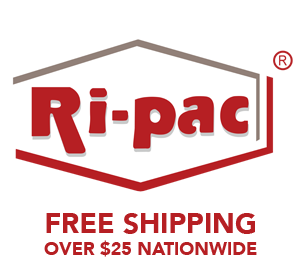Software development
Azure Pipelines: The Basics and Creating Your First Pipeline
Content
After the build pipeline runs successfully, the release pipeline will be triggered spontaneously to deploy the automation process to the destined folder in Orchestrator. You have both the build pipeline and release pipeline built now. To test whether the pipeline works, you can commit a code change in your automation process. Now that we have the UiPath Integration, the next step is to create a new project in which you can build pipelines for your automation process. Click on the New project button in the top right corner of the home page.
Hence, the need for fully and continuously tested automation processes is undeniable. Continuous Integration and Continuous Delivery play a vital role in the cycle of software delivery processes. Implementing CI helps uncover underlying issues early in the development cycle, which makes them less expensive to fix. Together, CICD advances software delivery in a more effective and expedient manner. Within a release pipeline, there are many different items that need to be deployed. These items are called artifacts.
Software as a Service (SaaS)
On the new window, click on the Clone button from the top-right of the screen and copy the repository URL. Select Retention Tab to add, view, or delete the policies to keep or remove a certain number of builds. You can now collaborate with your team on the ASP .NET Core App with an automated CI/CD process that deploys the latest change to the website. You will need an active Azure account for creating Azure Repos and Pipelines. You can create a Microsoft Azure Account for the same. I ran into a problem where i can not create a pipeline which created in the classic way .
- Execute Powershell script TTT_Run_Tests.ps1 to execute the tests.
- You can select the Additional settings if you want to change the web app or database parameters.
- Below you can read details for the prerequisites and necessary configurations to apply.
- SelectNew service connectionand then selectSonarQubefrom the service connection list.
- Furthermore, Azure Pipelines works with most programming languages, so users can implement it with most applications on any platform like Windows, Linux, and macOS.
This ensures your project isn’t exposed to the Internet. A public project allows non-members of a project and non-signed-in users read-only access to the project’s artifacts. The next four steps restore the environment.
Reporting your quality gate status in manually created or existing projects
Then, you’ll be asked to provide a personal access token withCode (Read & Write)scope so SonarQube can access and list your Azure DevOps projects. This token will be stored in SonarQube and can be revoked at any time in Azure DevOps. Once that’s complete, he can azure devops services select from a series of preconfigured templates, such as Android, .NET Desktop or ASP.NET. He opts for the “empty job” and proceeds to select from the agent pool. There are a range of options, including hosted Windows containers, hosted Ubuntu or hosted MacOS.
In this step, you will learn how to create a simple pipeline to execute test cases and create an artifact to feed to a release pipeline. First, go to the Pipelines section, click on Create Pipeline. In the Connect tab, select Azure Repos Git, then select the repository connected from the previous steps. https://globalcloudteam.com/ If you followed along throughout this Project, you now have a new Azure DevOps organization, project, build pipeline, release pipeline and release. If you’re done testing things out, be sure to remove the original organization created so you don’t risk being charged for any Azure resources.
Automation Testing Advisor
Test Stage – This stage corresponds to automated tests running to validate our code and its behavior accordingly. This stage acts as a sieve that prevents the bugs from reaching the end-user. There can be multiple stages, from smoke tests to end-to-end integration tests. Failure at this stage will expose errors in the code. In this article, we will learn how to configure an Azure CI/CD pipeline and integrate it to LambdaTest Azure DevOps for bug tracking.
The UiPath Integration for Azure DevOps comes with a pack of pre-created tasks that allow you to build and deploy UiPath automation processes. Note that you must be the administrator of the organization to complete this step. To do this, click on the Organization Settings link on the bottom left of the organization’s home page. In the early stages ofrobotic process automationdevelopment, many companies opt not to implement a CICD pipeline. However, the RPA suite has been expanded, now containing more sophisticated processes and innovative technologies.
Create Build pipeline on Azure Devops
You can now work on the bug by creating a new branch, and after resolving the bug, you can create a merge request. On clicking on Create branch, under Development, give the branch’s name and select the bug reported from LambdaTest. This can be viewed with repro steps, System info, and all other details right on the Azure DevOps Portal. Place your Project URL in the required URL field; to find the URL of the project, go to the Project details, and in the right pane, you will find a browse button.
The value for this variable, “app” was set at the beginning of the pipeline. The first three steps install system dependencies and set up Package Manager as the default R repository for faster package installation from binaries. If your organization does not have Package Manager, it is recommended to use Posit’s Public Package Manager for access to binaries. To successfully deploy to Connect this pipeline will need several environment variables. The screenshot below illustrates where to go in the Azure settings. Last we need to define the ISPW webhook in CES to be able to trigger the build pipeline based on a promote in an ISPW application.
Configuring the Azure DevOps Build Pipeline
For example, Azure Pipelines allows software developers to configure pipelines using YAML files, which is handy and easy to learn. Furthermore, Azure Pipelines works with most programming languages, so users can implement it with most applications on any platform like Windows, Linux, and macOS. In short, Azure Pipelines provides a simple, effective, and reliable way to automate software delivery. Select the Deploy_to_webapp stage and confirm Deploy. When you do so, the status will change to In progress as shown below.

